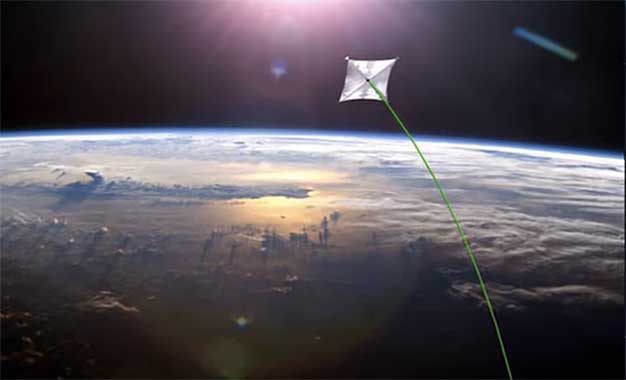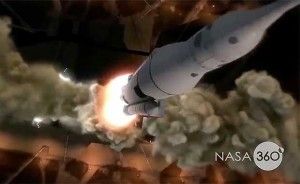Advertisement
NASA’s Propulsion Theory Suggests We Could Travel to Mars ‘in Three Days’
By Jason Owen
Advertisement - Continue reading below

The ability for interplanetary travel may soon become far easier for humans if the theory of one NASA scientist is put to the test.
Philip Lubin, from the University of California, Santa Barbara, proposed in a new NASA video to use “photonic propulsion” to launch shuttles into space, which the physics professor believes could allow robotic crafts to reach our neighboring red planet in a “few days,” and a shuttle carrying humans to arrive on Mars in a little over a month. Currently, it takes about five months for any spacecraft to reach the planet.

Photonic Propulsion uses the energy and momentum of lasers to move objects. In this case, the propulsion system would be used to launch a rocket into space at incredible speeds.
“Though particles of light have no mass, they do have energy and momentum,” shared Wired UK. “It’s this energy that, when reflected off an object, is transferred into a push. With a large, reflective sail, Lubin suggests, it would be ‘possible to generate enough momentum to accelerate a spacecraft’ via lasers pulsing light from the surface of the Earth.”
In the video from NASA 360, “Going Interstellar,” Lubin discusses how the propulsion method can solve our “dilemma” of slow space travel.
“We know how to get to relativistic speeds (a speed which is a significant proportion of the speed of light) in laboratory; we do it all the time,” says Lubin. He continues:
“Then we go to the macroscopic level – with things like aircraft, cars, spacecraft – we’re pathetically slow. So, the question is: can we bridge that gap between what we do now in the macroscopic level with chemical binding energies to relativistic speeds, which are done with electromagnetic acceleration?”
Lubin then goes on to say that current rockets already contain the same level of power that is needed to push a shuttle into relativistic speeds.
“The shuttle when it would take off, or the SLS when it will take off, will have a power off the launchpad between 50 and 100 gigawatts,” says Lubin. “Turns out, to get to relativistic speeds with the spacecraft we’re talking about, you need basically the same power level.”
Lubin concludes, “We could propel a 100 kilogram robotic craft to Mars in a few days. If you want to push something like shuttle class, it takes you roughly over a month to get there. … There is no known reason why we cannot do this.”
Watch the full fascinating video below (or stream a longer version here) and get your moon – I mean, Mars – boots ready.
Advertisement - Continue reading below
